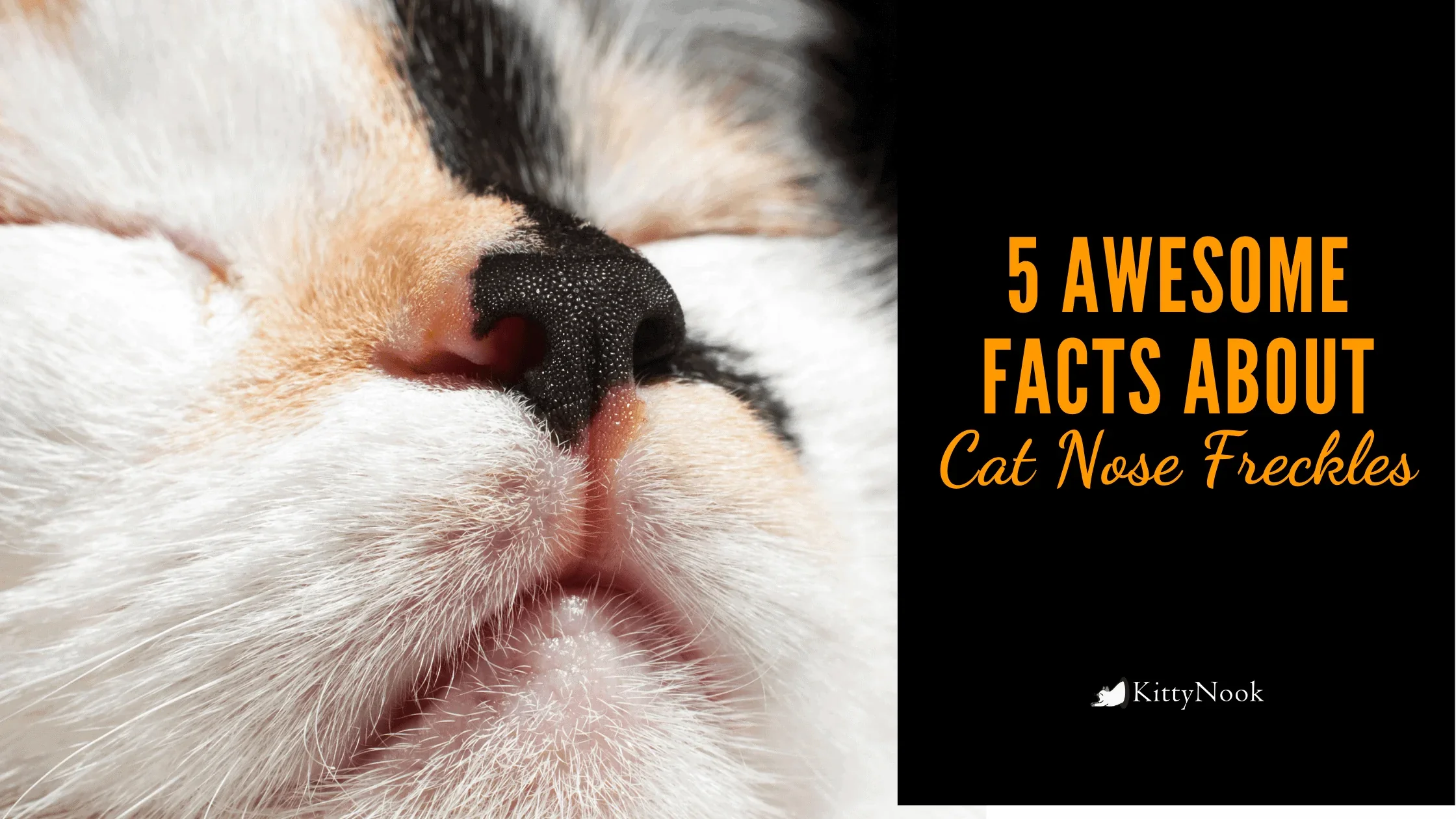Are cat nose freckles comparable to human freckles? How and why do cats develop them? Are they an indication of melanoma in cats? Know them all in today's blog!
Does your cat have blemishes on its nose? My Otis does. He has that freckle on the right side of his nose, the eyelid, and in the paws. If your cat has lentigo simplex, it's good to understand some things regarding them. Here are five facts about them:
1. These freckles are caused by lentigo
Lentigo is a hereditary condition in cats that causes a dark, freckle-like appearance. The areas are either black or brownish, and if your cat for some reason allows you to touch them, you'll that they're either flat or has a slight bulge. These freckles can help me as small as 1 millimeter and also as big as 10 millimeters. Lentigos are benign cosmetic conditions, and there's no need for you to worry about them appearing.
If your cat has a few freckles, this is called lentigo simplex; if the freckles crowd and seem to combine into a large black spot, the condition is called lentiginosis profusa. It's easier to call it lentigo or just cat freckles.
The freckles are the outcome of the pigment-producing cells called melanocytes having more melanin than the bordering skin. This results in the dark spots we see. It is unknown why some pet cats have the hereditary predisposition for lentigo while others in the same shade don't.
2. Your cat most likely has freckles in other places
Lentigines (the fancy word for numerous lentigo freckles) usually don't start on your feline's nose but the lips and gums. You may not have noticed when the epidermal melanocytes started to produce extra pigment on your lips, but it often begins as very early as one year old.
As your feline ages, these freckles become a lot more extensive, usually being more prominent on his lips and the periodontal. Freckles can also be found on other parts of the body, like the nose, where you probably notice them since they're front and center.
As they spread, lentigo blemishes could additionally appear around the sides of your cat's eyes or on the eyelids. In some cases, you will find them inside the ears and on the footpads.
3. Orange cats are more likely to have lentigo than other colors
Because lentigo is a genetic condition, it seems linked to the genes that make felines have red or orange cats. Freckles are usually seen on orange, calico, tortoiseshell, or flame point cats, potentially because they all have the orange pigmentation. Cream and silver cats also occasionally have lentigo, though it's less common in those colors.
4. Cat nose freckles don't hurt

You may be wondering if freckled areas in your cat's body itch to hurt; unless your feline hangs around looking in the mirror staring at themselves, they will never recognize the freckles are there. Additionally, lentigo does not call for any treatment from your veterinarian.
Lentigo freckles don't grow to become a form of cancer or a malignant tumor, so you don't have to worry about it being early signs of something scary. If you're concerned about impurities on your cat's body, or if something significantly alters in size or becomes tender, seek your veterinarian to be on the safe side.
5. Cat freckles do not grow with sun exposure
Redheaded know that their freckles will grow and spread when they spend time in the sun. Cat lentigo does not work this way. There is no evidence that your cat's freckles will increase because of exposure to the sun.
Does your feline have a lot of freckles or just a few? Where are they? Please share them with us!





















